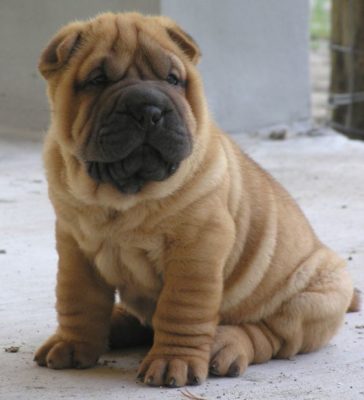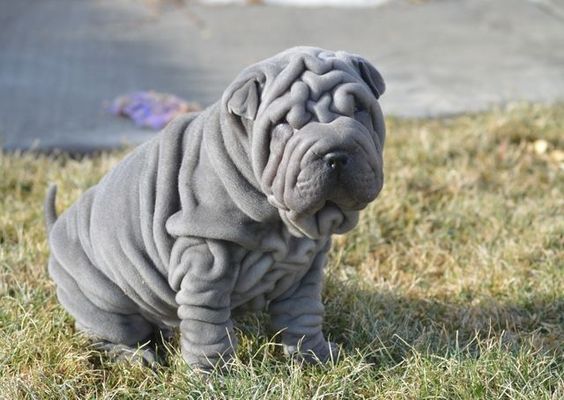Shar Pei
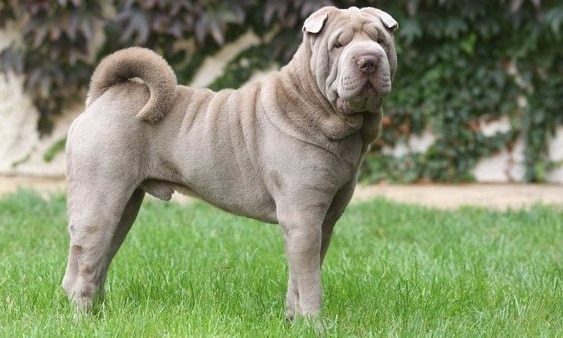
The Shar Pei has a strong, confident character and becomes attached to his family very quickly. The adult pet has a heightened sense of security and distrust of strangers, which makes him an excellent guardian at home. It would help if you introduced him to other dogs and pets from an early age because the Shar Pei can be hostile to other animals.
Table of Contents
Breed Information
| Another Name | Cantonese Shar-Pei, Chinese Fighting Dog |
| Origin | China |
| Height | 44-51 cm |
| Weight | 18-35 kg |
| Fur | Short, stiff and bristly coat without undercoat |
| Color | Any solid color except white |
| Lifespan | 10-12 years |
| FCI Classification | Pinscher and Schnauzer – Molossoid and Swiss Mountain and Cattledogs |
| Group | Watchdogs, for protection (guard dogs) |
| Price | $1000-2000 |
Breed Photos
Origin History
There is no exact theory about the origin of the breed. Scientists claim that the Sharpei is descended from the Mastiff or the Chow Chow. The Shar Pei is considered one of the most ancient species and one of the primary breeds for all modern dogs.
The Shar Pei probably existed before our era during the Han dynasty in China. It is confirmed by clay figurines depicting the dog.
Over time, the dog became a right all-purpose breed. They were used as helpers on farms, for hunting, and as faithful defenders of territory. Soon, during the war under the Ming dynasty, the number of Shar Pei declined sharply.
In the twentieth century, there was also a big blow to the breed. The Chinese Communists came to power and forbade the use of Sharpies because they considered them useless.
Since 1970, a small group of people took up the restoration of the breed, and for a long time, was engaged in the breeding of dogs. Under its modern name, the dog was first registered in 1973 and was officially recognized in 1999.
Appearance
The appearance of the dog is very unusual. In large part, this is because of the skin, which is creased and makes the impression that it is too much for the dog’s body. The coat is short, without an undercoat, straight. Shar Pei can be a variety of colors: solid black, red, brown, but just not white.
Usually spotless, but there may be light or dark spots on the coat. Dogs can be between 44 and 51 cm tall. The weight is 18-35 kg. Males are usually taller than females.
The ears of a Shar Pei are very small, triangular. There are usually no skin folds on the limbs. The tail is short, tapering toward the end, and can often curl into a ring.
Character
The Shar Pei has a strong, confident character and becomes attached to his family very quickly. The adult pet has a heightened sense of security and distrust of strangers, which makes him an excellent guardian at home. It would help if you introduced him to other dogs and pets from an early age because the Shar Pei can be hostile to other animals.
Dogs are a little stubborn, not afraid of noise, feel comfortable in noisy companies, and do not like to spend time alone. It is not typical for them to bark a lot. They raise their voice only when they see a direct danger.
Care
It is not difficult to take care of a dog. Their fur does not have the natural canine smell and sheds a little. The main problem of a Shar Pei is his ears. They have poor ventilation, and if water gets in there, the dog can get sick. Therefore, the Shar Pei does not like to bathe.
Bathing should be carried out no more than once a year. Once a week, it is necessary to comb the coat with a special brush to wipe the folds thoroughly. Trim the claws, carefully avoiding the beginning of blood vessels. The eyes of the Shar Pei require additional attention. Once a week, they should be wiped with a damp cloth.
Training
The Shar Pei has a perfect memory, they quickly remember all the commands, but they can show their stubbornness from time to time. In this case, the dog should not be forced to do something, but it is better to encourage and praise. You can encourage it with something tasty.
The first training sessions are recommended from as early as three months of age. The sooner the animal is socialized, the easier it will be in the future.
You must train your Shar Pei to play with other animals and to the simple commands “yuck”, “sit”, “stay put” from a young age. To make the dog feel your leadership position, you can change your voice’s intonation but never shout.
Common Diseases
The Shar Pei has a robust immune system and good health. They tend to have fleas, so it is important to be vaccinated against parasites in time. Diseases such as glaucoma, entropion, atopy, otitis media, abdominal bloating can also occur.
Nutrition
Many doctors recommend feeding Shar Pei food. After all, it contains the necessary vitamins and minerals. If you want to provide him natural food, it should be fresh meat, cottage cheese, cereals, vegetables. For meat, beef is best.
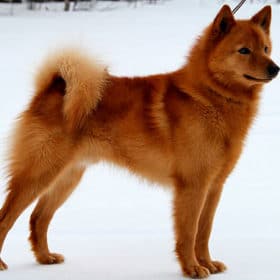 Finnish Spitz
Finnish Spitz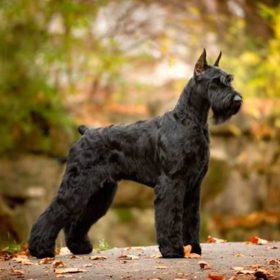 Giant Schnauzer
Giant Schnauzer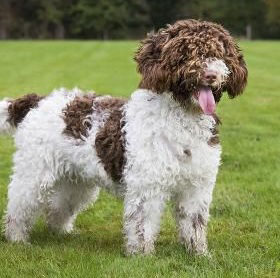 Spanish Water Dog
Spanish Water Dog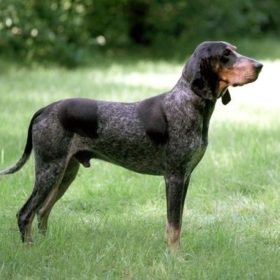 Lucerne Hound
Lucerne Hound Picardy Spaniel
Picardy Spaniel Finnish Hound
Finnish Hound
